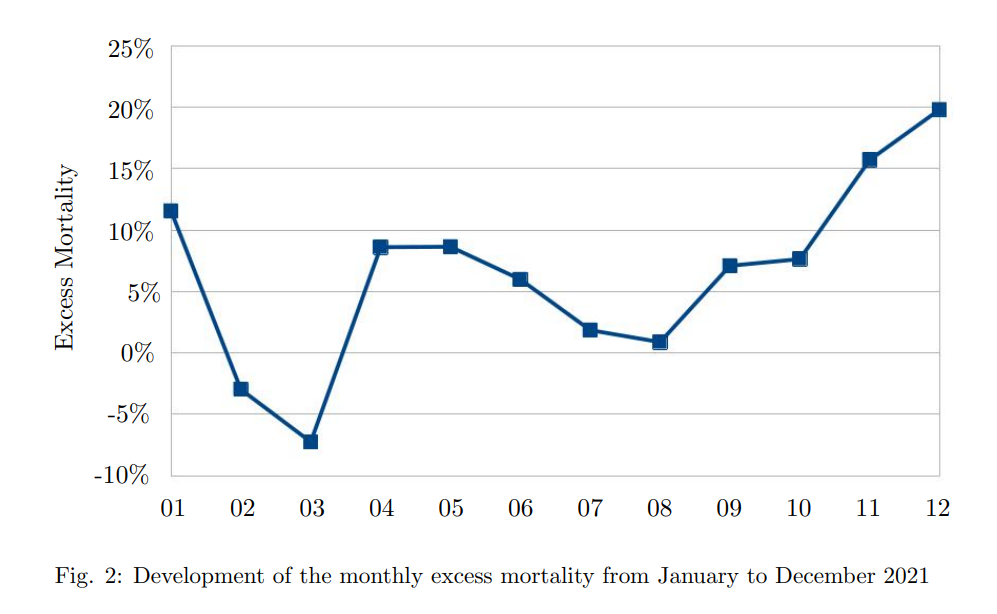From our friends in Germany…
Today, I have published a new paper at an open access platform (OSF) which I have written together with a mathematician who is an expert on excess mortality. I think this could be of interest for you.
In that paper, we compare for the years 2020 and 2021 the number of observed all-cause deaths with the number of expected all-cause deaths in Germany, taking into account the demographic development and the increasing life expectancy.
The results show that whereas almost no excess mortality was observed in 2020 - the pandemic year without vaccinations - a relative strong increase in excess mortality is observed in 2021 - the pandemic year with vaccinations.
Beyond these overall mortality effects, we additionally show two very interesting characteristics of the mortality increase in 2021:
Age-dependent Pattern
An increase of the observed mortality compared to the expected mortality occurs not uniformly over the different age groups. The increase in mortality excess observed in 2021 is almost entirely due to an above-average increase in deaths in the age groups between 15 and 79, in some of which high deviations of the observed number of deaths from the expected value are observed.
The highest values are reached in the age group 40-49, where an increase in the number of deaths is observed that is nine percent higher than the expected values.
Here is the respective Figure in our paper:
The Course of Excess Mortality Across the Year 2021
We additionally determined the course of excess mortality across the year 2021 for the age group 15-79 (the age group where excess mortality was observed). The results are really interesting.
There is a significant mortality excess in January which is nearly compensated until March. That is, at the beginning of April, cumulatively, excess mortality was close to zero. In April and May, a significant increase in mortality excess is observed, followed by a decrease up to August.
However, other than at the beginning of the year, mortality excess remains above zero so that the increase in mortality excess in April and May is not compensated for. In September there is again a significant increase in excess mortality, which is more than doubled in November and December, reaching very high levels of about 20 percent.
Here is the respective Figure in our paper:
The patterns of observed excess mortality - age-dependency, course across the year - strongly speak against a number of possible explanations for the high number of unexpected deaths in 2021.
The age-dependent pattern contrasts with the risk profile for COVID-19 disease, so an explanation by COVID-related factors seems unlikely.
Other possible explanations such as postponed surgery or long-COVID effects are also implausible, because such effects would have to affect also and especially the older age groups. In addition, there is no reason why such factors should show such a course of excess mortality across the year as observed.
Interestingly, the course of excess mortality in 2021 strongly covaries with the course of the vaccinations: the increase in unexpected deaths in April and the increase from October onward coincide with the start of the vaccination campaign and the start of booster vaccinations, respectively.
Such an observation suggests that the unusually high number of unexpected deaths in 2021 may be related to the COVID vaccines that were the first-time used and administered population-wide in 2021.
Here is a respective Figure (not shown in our OSF paper which is only about excess mortality); we have published a similar Figure in a discussion paper in German language.
I would be happy if anyone has comments, and if it is found to be interesting, feel free to redistribute.
Prof. Dr. Christof Kuhbandner
Department of Psychology
University of Regensburg
93053 Regensburg
Germany







They can only tip toe around this issue for so long. It's time to pay the piper, and soon.
The data is becoming overwhelming. Tom Renz sees it, too.
https://clearnewswire.com/596951.html